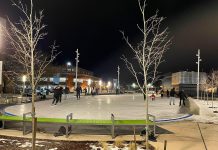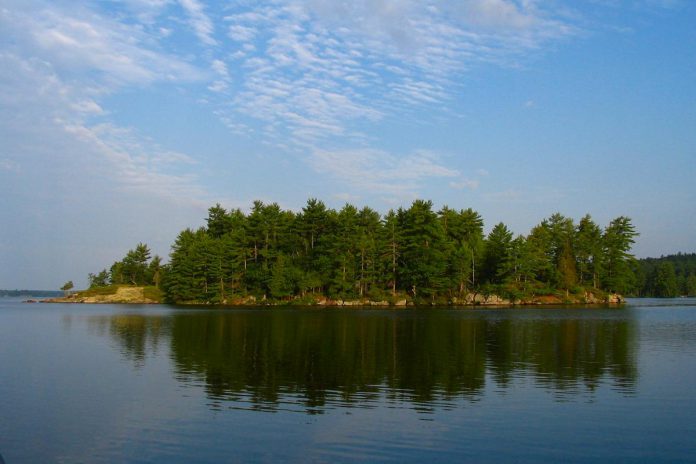
As it looks forward to its 25th anniversary year in 2026, Kawartha Land Trust (KLT) is already celebrating another major milestone: two decades of protecting one of its very first properties.
Under KLT’s protection, East Syndicate Island remains the largest undeveloped island on Stony Lake (also known as Stoney Lake) and continues to be a place of great ecological interest.
“There is a mix of ecology, species at risk, and all kinds of other things that we see going on in our really wonderful natural spaces in the Kawarthas — and it’s all hyper-concentrated and demonstrated in one small but mighty space at East Syndicate Island,” says KLT land stewardship manager Hayden Wilson.
“Everywhere you look, starting from the ground up, is this really unique conservation gem that we get to celebrate.”
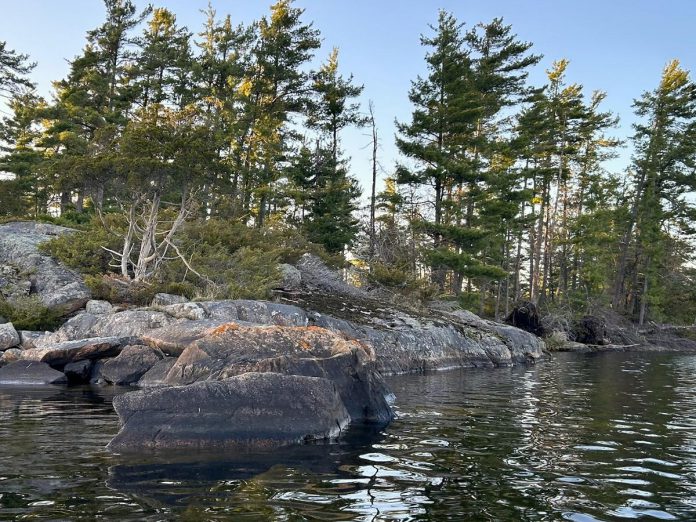
Founded in 2001, KLT is a land conservation charity that currently protects more than 8,100 acres across 44 ecologically diverse properties. While some of the properties are public nature reserves and host hiking trails that are open to members of the public so they can connect with nature, others — including East Syndicate Island — are protected nature reserves that are closed to the public to maintain sensitive ecosystems.
East Syndicate Island was originally owned by retired schoolteacher Norman Cowan, who signed a conservation easement agreement with KLT in 2005. The agreement allowed Cowan to retain private ownership and management of the land while also providing him with the resources he needed to effectively protect it.
After Cowan passed away in 2016 at the age of 82, his estate bestowed full ownership of East Syndicate Island to KLT, along with the Jeffrey-Cowan Forest Preserve. The 147-acre nature reserve encompasses one of the largest undeveloped stretches of shoreline on Stony Lake, and now makes up the eastern extent of KLT’s publicly accessible Stony Lake Trails network.
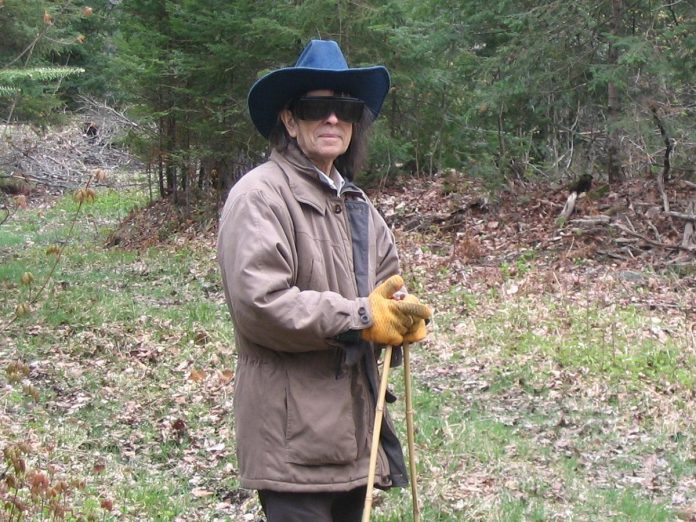
“Norman was well-known in the area for being really deeply involved with caring for both his mainland property and his island property,” says KLT executive director John Kintare. “He spent numerous hours managing invasive species, he’d clean up after a windstorm, and he had a huge series of pumps and hoses set up if there ever was a forest fire. He knew he wanted to keep it protected, and so he did a great job managing it.”
About five acres in size, East Syndicate Island is located 500 metres off the northern shore of Stony Lake in Boschink Narrows. It is connected to West Syndicate Island by a very small land bridge that’s only accessible when water levels are low.
A site of geological interest, the island marks the transition between the limestone bedrock found in Southern Ontario and the granite bedrock of Northern Ontario. The forest habitat, with its mossy understory and mature and dominating red oak and eastern white pine trees, offers a home suitable for at-risk species, including bats. The little brown myotis, the small-footed myotis, and the tri-colored bat have all been seen or heard through acoustic monitoring on the island.
“The bats prefer mature trees with cavities they can hide out in during the day and then come out at night to forage for flying insects over the water,” says Wilson. “It’s a really great mix that supports their lifecycle through foraging, but also sets them up for a good season to breed and replenish the population as species at risk.”
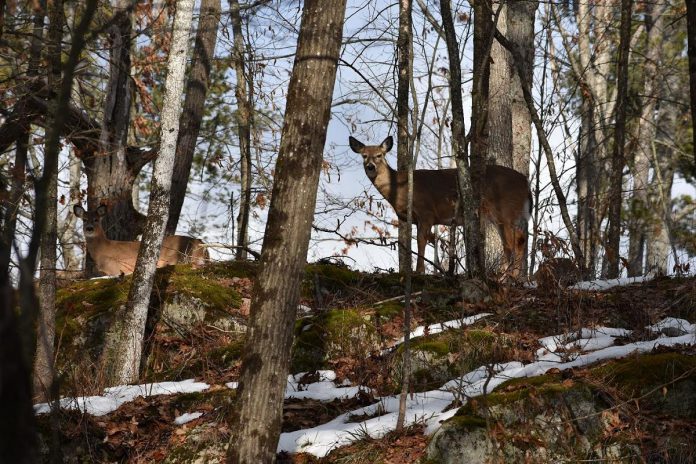
On East Syndicate Island, the forests mix with open areas that provide a habitat for plants that invite various insects and pollinators to the island. The island’s rocky shores also provide habitat for another species at risk, the Northern map turtle.
“As cold-blooded animals, one of their preferences is to have big open rock barrens by water where they can bask to gain energy from the sun, but are still able to make a quick escape into the water if they need to,” says Wilson. “These rocky ridges that go right down in the water are the perfect habitat.”
Wilson notes that islands can often host disproportionately high amounts of biodiversity due to their isolation from the mainland and mix of specialized environments.
“Island biogeography creates unique ecological situations,” says Wilson. “There are so many dynamic and live things at play in such a small space. Even though it’s only a five-acre property, it’s a biodiversity hub with ecosystems and interactions you won’t find anywhere else.”
In the 20 years of KLT’s stewardship of the property, East Syndicate Island maintains good ecological conditions and has not required a lot of conservation initiatives, outside of regular monitoring and clean-ups after major storms.
“One of the things this island displays the best is that it can be really resilient, and often only needs just a little help from us to make sure things are on track,” Wilson explains. “Our role in the stewardship of this land often means letting the natural processes unfold as they do, monitoring, and responding to threats like invasive plant species if they occur.”

The property has provided KLT with a unique opportunity for research and to learn more about undeveloped islands in the region and the roles they play within larger ecosystems. Most recently, this was done through a bat monitoring project in 2021 that aimed to understand how the island played a role with onshore bat populations. The property has also been used in a project to map the natural shoreline on Stony Lake and was used as a case study on how to restore a shoreline back to its natural state.
As for whether a KLT-owned property is designated as a public nature reserve or a private one like East Syndicate Island, Wilson explains that it largely depends on the wishes of the donor and the presence of ecologically sensitive habitats.
“People and the environment are absolutely not separate,” says Wilson. “As we’re protecting more and more lands, we’re trying to strike a delicate balance of having spaces that are open to the public to appreciate and enjoy like Ballyduff Trails, and places that are better left for the turtles and the birds whose beauty we can appreciate from afar.”
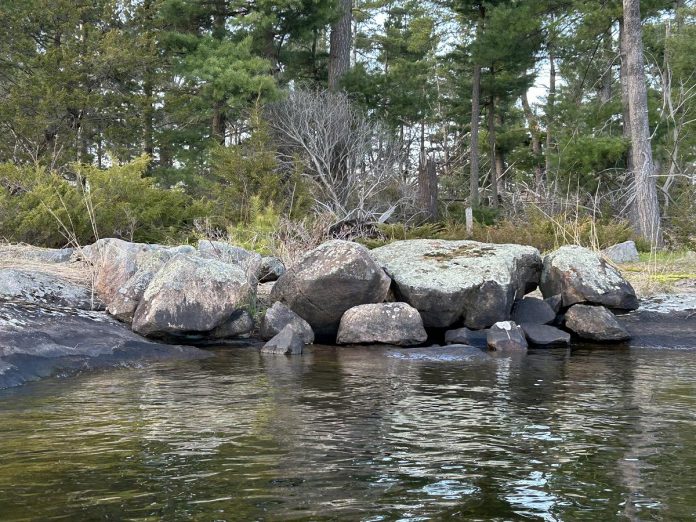
For landowners interested in maintaining the conservation of their property for generations to come, KLT can offer information about the different options available, including conservation easement agreements, land donation, or education on and assistance with caring for the land with the help of KLT’s Partners in Conservation program.
“Anybody who owns land and cares about that land and wants to see it well-managed and taken care of — whether that’s by themselves, by future generations, or by us — we’re happy to chat about what those options look like,” Kintare says.
Pointing to the additional 43 properties that KLT has protected since it all began when the organization was founded in 2001, Kintare is hopeful that additional landowners will work with the organization so more natural and working lands in the Kawarthas can be protected in perpetuity.
“The volunteers and the staff and donors that we attract are passionate about keeping the Kawarthas beautiful and natural,” he says. “There are lots of reasons people should trust us but, at the same time, I’m always just so honoured when they do put that trust in us. They are saying our work aligns with their values and aligns with their vision, and they want to work with us to make sure their property is permanently protected.”
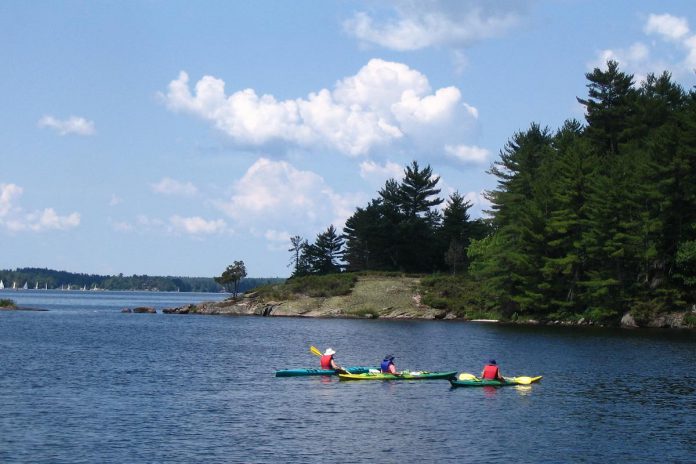
The celebration of two decades of protecting East Syndicate Island is only the beginning of the excitement to come as KLT looks forward to its 25th anniversary of protecting nature across the Kawarthas.
“The 20th anniversary of East Syndicate Island is a really nice way to launch into that broader celebration of everything that’s happened over the past 25 years,” Kintare says. “We’re really looking forward to next year and celebrating how the community has come together time and time again to protect they land they love.”
For more information about Kawartha Land Trust, including how to protect your land, volunteer, and donate, visit kawarthalandtrust.org.
This branded editorial was created in partnership with Kawartha Land Trust. If your organization or business is interested in a branded editorial, contact us.




















